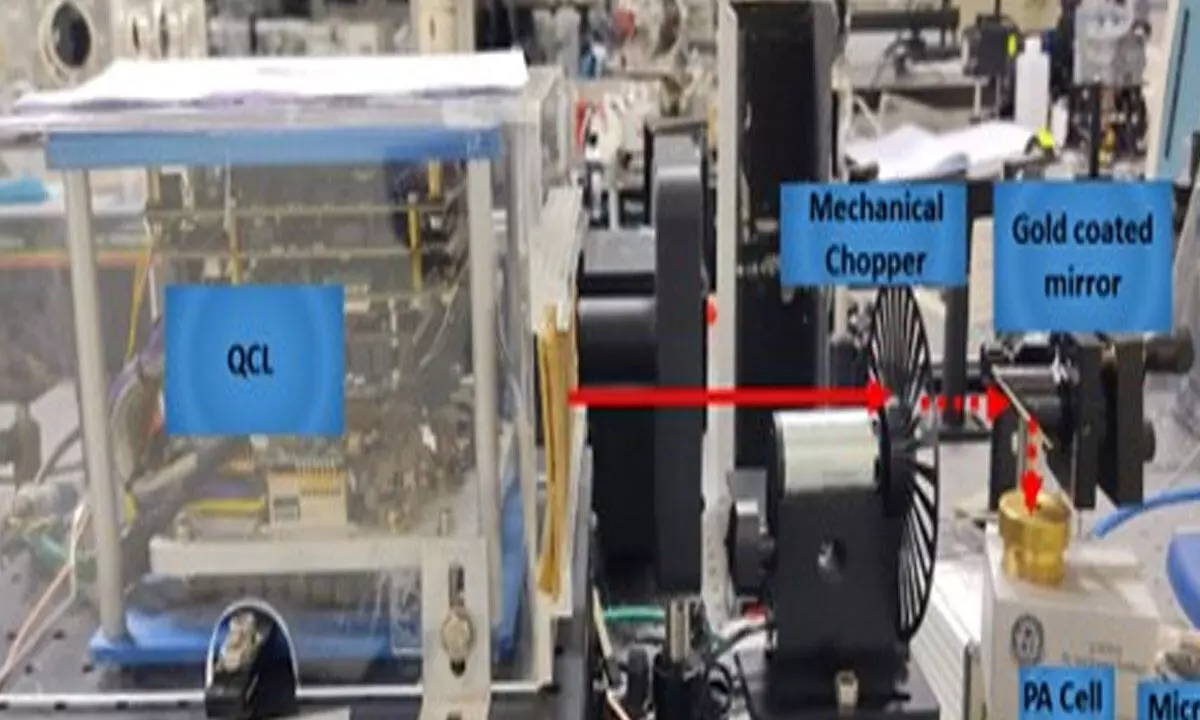Hyderabad: UoH research study contributes to development of aceto ne detection

The photoacoustic is a well-established absorption technique invented by Alexander Graham Bell (telephone inventor) during the year 1880.
Hyderabad: The photoacoustic is a well-established absorption technique invented by Alexander Graham Bell (telephone inventor) during the year 1880.
The technique finds potential application in detection of gaseous pollutants (available in low concentration) and biomedical imaging. It is based on the detection of acoustic signals by solid/liquid
gaseous molecules in a specially designed Photoacoustic (PA) cell.
The PA cell acts as a resonance cavity and helps to amplify weak acoustic/pressure waves produced due to absorption of incident laser radiation.
The current PA sensor has several advantages over the existing photonics techniques where low-cost acoustic microphones have replaced the expensive photonics detectors. It can work in all types of noisy ambient due to selectivity of resonance frequency.
The research team led by Professor A K Chaudhary and Arjun V S Kidavu (Senior Research Scholar), ACRHEM, School of Physics, University of Hyderabad got success to design and developed a high “Q” Helmholtz Photoacoustic (PA) cell sensor with a movable piston arrangement for the low-level detection of acetone biomarker.
The natural frequency of the cell is tunable between 1.4 to 4.4 kHz and an impressive maximum Q factor of 492.3 at 0.11 THz frequency (which is ~ 10 times higher than the existing reported designs) for the first-time. The reported innovation is currently under consideration by the DRDO, Ministry of Defence, government of India, patent division (under final stage of notification).
The fabricated Helmholtz PA cell is made of aluminium and has proven to be an extraordinary tool for acetone detection, a vital biomarker in diagnosing various diseases such as diabetes, asthma, lung cancer and others. We have achieved unparalleled sensitivity, detecting acetone at levels as low as parts per trillion (PPT).
This research holds immense promise for non-invasive medical diagnostics and may revolutionise disease detection.
Use of this cell is also extended for the detection of trace explosives and atmospheric pollutants, volatile solvents. The design has flexibility to use UV-VIS -mid IR-THz radiation.
The work is published in the recent issue of Spectrochimica Acta A: Molecular and Biomolecular Spectroscopy 2023-07-28. https://www.sciencedirect.com/science/article/pii/S1386142523009034.














